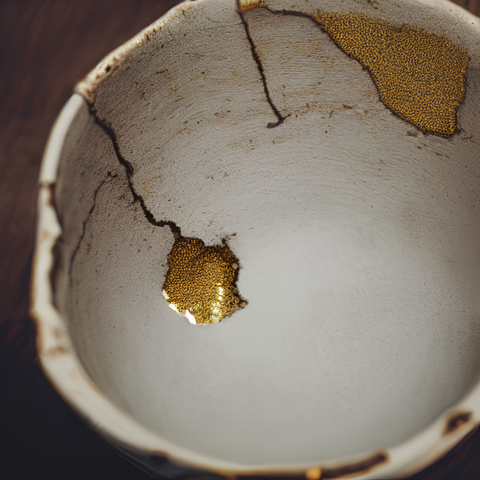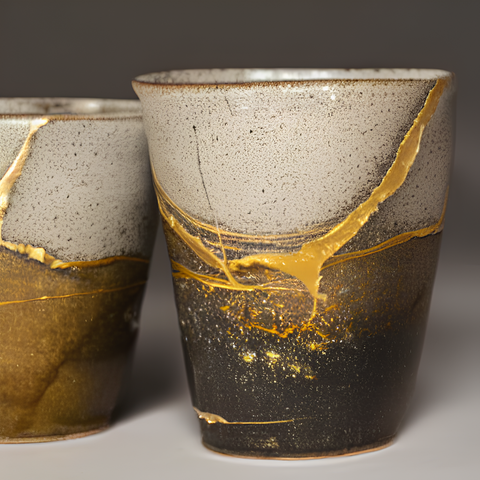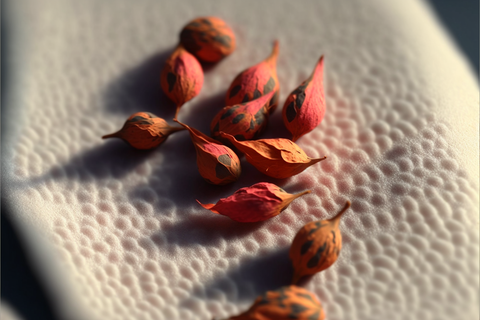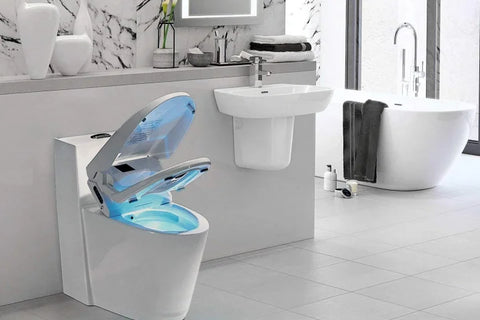
Ceramic Kintsugi Repair: The Art of Mending with Gold
Kintsugi is the Japanese art of repairing broken pottery with lacquer dusted or mixed with gold, silver, or platinum. As a philosophy, it treats breakage and repair as part of the history of an object, rather than something to disguise.

The History of Kintsugi
Kintsugi has its origins in the 15th century, when a shogun's favorite tea bowl broke. A Japanese craftsmen was brought in to repair it, using lacquer dusted with gold. The shogun was so pleased with the results that he commissioned more pieces to be repaired in the same way as the Japanese bowl mended with gold.

Kintsugi became popular in Japan, and the technique was used to repair everything from bowls and plates to vases and statues. The idea of repairing something with gold became associated with the Japanese philosophy of wabi-sabi, which values imperfection and impermanence. Kintsugi is now seen as an art form in its own right, and many people enjoy collecting pieces that have been repaired using this unique technique.
The Process of Kintsugi
The process of kintsugi typically involves using lacquer to bind together the broken pieces of pottery. The lacquer is often dusted with gold, silver, or platinum, giving the repaired piece a beautiful and unique appearance. In some cases, the broken pieces are simply glued together with lacquer, without the addition of metal dust.

The Japanese have a long history of fixing ceramic with gold by using lacquer, and the addition of metal dust. It's thought to have been inspired by the practice of gilding. Many traditional shoji screen doors in important castles and temples were decorated and painted and the most treasured were covered in gold foil.

The yellow color looks like it may only be paint or just aged paper, but if you look closely, you can see the small squares of gold leaf. It is really incredible.
Kintsugi is often seen as a metaphor for the human ability to overcome adversity and find beauty in imperfection.
The Materials Used in Kintsugi
The materials used in kintsugi vary depending on the preferences of the person performing the repair. Of course the base is broken ceramics. Urushi, a traditional Japanese lacquer is the most common binding agent, but gold, silver, and platinum dust can also be used to give the repaired piece a unique appearance. In some cases, broken pieces of pottery are simply glued together with lacquer, without the addition of metal dust.

Lacquer is a type of resin that is derived from the sap of certain trees. It is a natural adhesive that has been used for centuries in a variety of applications. The gold, silver, and platinum dust are added to the lacquer to give the repaired piece a more decorative appearance.
The use of metal dust in kintsugi is a relatively new development. Although gold, silver, and platinum are the most commonly used metals traditionally due to their beauty and value, other metals can also be used, and you will find many alternatives today that look equally as beautiful, but are more affordable.
The Benefits of Kintsugi
Kintsugi has a number of benefits over traditional methods of repair. First, it treats breakage as part of the history of an object, rather than something to be hidden. Second, it can give damaged objects a unique and beautiful appearance. Finally, it can be used to repair objects that are otherwise considered to be priceless or irreplaceable.

These benefits have made kintsugi a popular choice for repairing valuable or sentimental objects. In some cases, kintsugi can even increase the value of an object. If you are considering repairing a damaged object, kintsugi may be the perfect option for you.
If you have a damaged piece of pottery or ceramic, you could either bring it to JApan to have a master fix it with kintsugi. Or, with a little practice, you can master this ancient art and use it to repair your own damaged objects.
How to Do Kintsugi Ceramic Repair Instructions
Kintsugi techniques are the Japanese art of repairing broken pottery with a lacquer mixed with powdered gold or silver. The process is time-consuming, but it's worth it for the beauty that is created. There are many steps to this process, so let's get started!
1) Clean the broken pottery with water and a non-abrasive scrubber.
2) Repair any cracks in the pottery by filling them in with urushii (the traditional Japanese laquer) or epoxy (although most epoxy is not food safe)and smoothing them out. Then assemble the pieces together like a 3D puzzle. You may need to wait in between pieces to assemble more easily.
*pro tip- using some painters tape can help keep the pieces together while the glue is drying
3) Fill in any gaps that were created by removing pieces of the pottery with your laquer or epoxy, then smooth over the area until it has filled in fully.
4) Allow it to dry for 24 hours or more. This will create a foundation for your gold or silver lacquer to adhere to easily .
5) Mix together the lacquer, gold or silver leaf, and water in a different bowl.
6) Apply the lacquer to your pottery and allow it to dry overnight.
7) Clean up any mess with a razor by scraping off excess glue that may have gotten on your pottery and lightly buffing your finished Kintsugi to make it shine.


